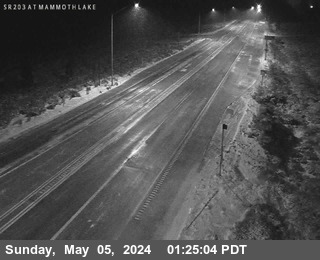Brought to you by Howard Sheckter
Mammoth Weather Outlook
Cooling trend now in process with excessive heat spell now in the past…..Records broken, both for dates and consecutive days……With the passing of July, climatology indicates a gradual cool down for August……Perseids meteor shower will be the best in 7 years!
Sunday July 31, 2016
Thursday PM:
All areas should be pretty close to normal, temperature wise today… The developing Trof off shore has initiated a southerly flow aloft and so monsoon moisture has been tapped and streaming north. Some showers reported over mainly south central Mono County. Moisture will flush east tomorrow.
The temperature forecast for Mammoth is in the mid 70s this weekend during the day. Upper elevations of town will be in the low 70s. However, the upper trof will bring a lot of drying, so night time temperatures will drop dramatically. Lows in Mammoth will be mostly in the 40s this weekend before sunrise.
Monday Afternoon Update:
WOW 105 in Bishop as the official high! That was not suppose to happen!
Model error…Human error?
The forecast is for 98 degrees tomorrow Tuesday.
Mammoth was 2 degrees warmer today with an 84 high.
We are still expecting a cool down with below normal temperatures going into and through the Blusapalooza weekend. Heights will be anomalous low for this time of the year. High temps may only be low to mid 70s through the weekend. However a lot of (breeze) may precede the weekend and accompany the weekend. If you going to the Festival of Beers…bring a medium warm jacket for the evenings this weekend. The coolest day will be Sunday.
Dr Howard and the Dweebs……………………
______________________________________________________________________________________________________________________________________________
Lots to think about this morning…
- A new record of consecutive days recorded at the bishop airport of 105f or greater. (July 22nd – 29th) There were several days of 107 to 108)
- Record consecutive number of days of 85f or greater in Mammoth Lakes during the past 10 days
- ENSO
- Outlook
- Perseids Meteor shower (potentially best display in 7 years)
I. The heat wave just past was the result of a series of sequences that are both ongoing and have terminated;
- The PV that is usually found over the NH Pole during the summer has at times, split up into separate vortices’ at relatively lower latitude’s, however still mostly north of the Arctic Circle. Again worth noting, a few strong incursions to the south have occurred. The westerlies over the Western Hemisphere along 50 north seem to have been more active this Summer probably due to the southerly displacement of the PV. Its effects south along the west coast of the CONUS have brought “periods” of cool rainy or showery weather to part of the Pacific NW. South of the jet over CA, it has resulted in very dry weather. The anomalous dry West to SW flow has done much to keep our air mass drier than normal. Deep Persistent trofing in the GOF has displaced eastward or squashed the subtropical continental high….creating a weaker Monsoon Season, both in the far southwest and Eastern CA. The dry air mass combined with mostly an east-west oriented continental high created the perfect storm (so to speak), for both extensive and excessive heat during the hottest time of the year. That heat spell is now broken with a trend this new week toward more season temps, then….possibly cooler than normal temps late this new week and beyond.
II. Scripps ENSO forecast for a strong La Nina seem to be at odds with the latest Climate Forecast System, as it is trending toward ENSO neutral after the first of next year. However, for the record, the forecast from June, from the IRI Compilation of SST Forecasts for the Nino 3.4 Region is still averaging (-1).. It will be interesting to see what the July update shows….
1. The Dweebs personally like the idea of a weak La Nina as the odds are more favorable for significant Atmospheric River events forced by the MJO.
III. Outlook (Weather)
- West coast trofing will return this new week with continued dry southwest flow. High temps will settle into the low 80s with an increase of the afternoon zephyr winds. Later in the week, the models show an interesting little feature. An extension of a trof that splits, closes off just west of the Bay Area then lifts through north-central CA. The closed circulation at 500mb suggests a period of upper divergence for at least the Northern Sierra. 700RH progs show that moisture is starved with this system, nevertheless, there may be enough lift for some isolated convection and dry lightening over the northern sierra, going into next weekend. For the Mammoth area, it just looks breezy and cooler for the Blusapalooza with highs in the mid to upper 70s with nighttime temperatures back down into the 40s toward sunrise.
- You folks in the Owens Valley will now have highs in the 100 to 103 range instead of 105 to 108!
- Daytime convection has ended for the Central Sierra
IV. Perseids Meteor Shower:
1. Earth will pass through the path of Comet Swift-Tuttle from July 17 to Aug. 24, with the shower’s peak — when Earth passes through the densest, dustiest area — occurring on Aug. 12. That means you’ll see the most meteors in the shortest amount of time near that peak, but you can still catch some action from the famed meteor shower before or after that point.
The Perseid meteor shower will burst into light this August as Earth passes through the long trail left by Comet Swift-Tuttle — and this year, it’s slated to put on a spectacular show. Here’s how and when to see the Perseids.
According to NASA meteor expert Bill Cooke, the Perseids are perhaps the most popular meteor shower of the year. They will be in “outburst” in 2016, which means they’ll appear at double the usual rates.
“This year, instead of seeing about 80 Perseids per hour, the rate could top 150 and even approach 200 meteors per hour,” Cooke said. It’s the first such outburst since 2009.
Moon Setting times for best viewing: (best viewing after moon set) The shower radiates from the NE. (Best viewing after Midnight)
August 11th 12:30AM (Near Peak)
August 12th 1:09AM (Peak of Shower)




